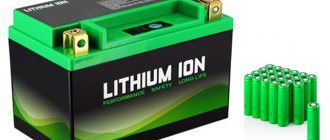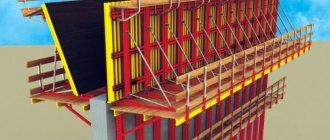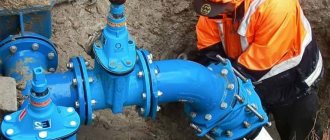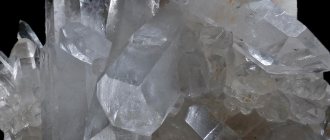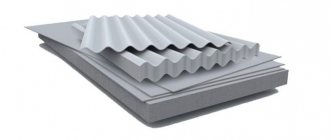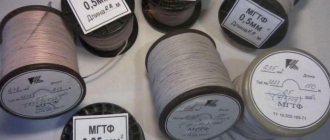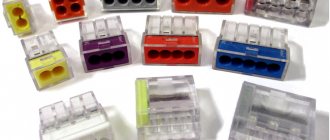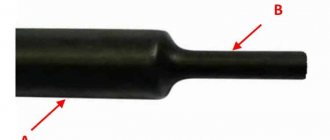Water repellents – what are they?
Moisture is one of the most dangerous corrosion factors for building materials. The strategy for protecting structures from destruction most often comes down to minimizing the contact of materials with water vapor and, directly, water. Today, any professional builder knows what a water repellent is, but we want to tell those of you who want to protect their home from premature corrosion about this product.
We won’t go into special terminology and overload you with unnecessary concepts, let’s just say: water repellent:
- Repeatedly reduces the ability to absorb moisture in direct contact with water, reduces wetness.
- Blocks capillary suction of moisture with concrete and brick, especially at the junction of the base and the foundation.
- Increases the resistance of materials to the adverse effects of the external environment, precipitation, wind, chemical and biological corrosion.
- Increases the frost resistance coefficient.
- Prevents the formation of dark deposits on brick, concrete, wood and stone surfaces.
- Prevents the formation of efflorescence on plaster, facing bricks and concrete.
Water repellent can be purchased at any large hardware store. With its help, you can reliably protect walls and other components from moisture. This is a convenient and inexpensive tool that greatly facilitates the work of builders and extends the life of building structures.
Kinds
There are two types of hydrophobization: volumetric, surface and mixed.
Volumetric hydrophobization is used in most cases for concrete and gypsum by adding it to the mortar. This type of hydrophobization allows you to protect the material not only on the surface, but throughout the entire volume. In some cases, additives are introduced directly at the enterprise during the manufacture of concrete structures.
If it is necessary to carry out volumetric hydrophobization at a construction site, holes are drilled in the concrete and the mixture is poured into it. This method is also called “infectious”; it is expensive, but it allows you to extend the service life of concrete by several decades.
With surface hydrophobization, the solution is applied to the surface of the structure where, when hardened, it forms a thin protective film. Most often this type is used for concrete facades or concrete fences.
The service life of this type is shorter than that of the volumetric one, however, after time has elapsed, the process of applying the film can be repeated.
The mixed type of hydrophobization maximally protects the material from moisture, since the volumetric and surface methods are used simultaneously. But due to the high cost of the process, this type is not always considered appropriate.
The principle of operation of the water repellent
Hydrophobizers (hydrophobicity), depending on their purpose and composition, can act differently. Most often, these products include organosilicon copolymers. These substances penetrate 2-15 mm deep into materials, depending on their structure and porosity. Then the water dries, and the polymers clog the large capillaries, forming a polymer film.
Clogging of small pores is not required, since the surface tension of water does not allow drops to penetrate into them. As a result, the material continues active gas exchange, or, as they say, “breathes.” The resulting film prevents the surface from becoming overgrown with mosses and lichens, and mold does not develop on it. In addition, most modern waterproofing compounds have antiseptic activity, which prevents the development of bacteria and fungi.
There is not only a water repellent for stone or a water repellent for brick. The product can be added to concrete or masonry mixture. This increases its elasticity due to the presence of surfactants in the composition. After hardening, the concrete becomes better, its frost resistance, moisture resistance increases and its service life increases. As you can see, a water repellent for concrete can be used not only outside, but also inside (the so-called volumetric action).
Wood stains and impregnations work in a similar way. As you know, wood does not like contact with water, because it deteriorates faster in the presence of moisture. This is due to the fact that a moist environment is necessary for the development of microorganisms such as bacteria and molds that use cellulose as a nutrient substrate.
So, the principle of action of water repellents is to clog large pores and capillaries, while small ones remain open. As a result, drops of water do not penetrate deep into the material, and gas exchange is not disrupted. There is a slight decrease in gas exchange activity within 20–30%, which does not have a critical effect on the materials.
Composition and principle of operation of the water repellent
The capillary-porous structure is characteristic of all stones (artificial and natural), as a result they have the ability to absorb water (which ultimately leads to the formation of cracks and subsequent destruction). To prevent this, use a water repellent for the stone. The composition that protects the surface of the stone from water ingress is a mixture of silanes (compounds of silicon with hydrogen), siloxanes (liquids based on organosilicon polymers) and an organic solvent (or water), which “work” at the molecular level. After applying a liquid water repellent to the surface, it penetrates deeply into the pores. The solvent evaporates, and a thin protective polymer film is formed on the internal surfaces of the pores, and the pores themselves are not clogged. Thanks to this, the “breathing” characteristics of the house practically do not change, and the service life of the finishing coating is significantly increased.
A solvent-based organosilicon water repellent (usually isopropyl alcohol) has high penetrating ability (up to 35 mm). Water-based water repellent has less penetrating power (up to 10 mm), is applied only to a dry surface and is often supplied in concentrated form (therefore it is easy to make the desired consistency yourself by simply adding the required amount of water in accordance with the manufacturer’s instructions). The service life of the protective coating varies from 5 to 10 years (depending on the composition).
Water repellents for bricks - which one is better?
Recently, a large number of houses have been built whose facades are decorated with facing bricks. This is certainly an excellent choice, because such a facade does not require additional finishing with decorative plasters, siding or lining. However, many owners of such houses are faced with a serious problem - the appearance of a white coating on the brick. These are the so-called “efflorescences”.
Efflorescence is a coating of various mineral compounds, the vast majority of which are salts. Building materials - brick, concrete, masonry mortar, plaster - contain various salts. Water evaporates from the surface of the brick, and salt precipitates. Thus, a whitish or gray coating forms, which is not so easy to clean.
However, the most unpleasant thing is that after removing the plaque, it appears again. The wall absorbs moisture during heavy rains; this moisture washes away salts from building materials, comes to the surface and evaporates. The salt, as you might have guessed, again remains on the wall in the form of a coating. What to do in this case? Buy a water repellent for bricks and solve the problem once and for all!
There are different types of water repellents for bricks. There are a variety of formulations on the market, from Russian manufacturers, imported and domestically produced. GOODHIM-700 has proven itself to be excellent. This is a complex preparation that is suitable for processing brick, concrete, asphalt, ceramics, stone, slate and many other materials. The composition is based on organosilicon, it also contains surfactants and biocidal components.
Water repellents for bricks whose price is higher are Kemasol, Wakker, Asolin, Aquafin. There are Russian drugs - Penta, Aquastat, Tiprom. In fact, all of the listed products are good, the specific composition is selected for specific needs, availability in the nearest store and cost play a significant role.
When are water repellents needed?
Water-repellent properties increase the service life and appearance of materials. For this reason, treatment with water repellents is recommended in almost every case where contact with water is possible. External walls, paths, asphalt, roofing, foundation - all these elements, one way or another, need hydrophobization.
Particular attention should be paid to processing by those developers who work in regions with a humid climate. These can be southern regions, as well as such regions as Leningrad, Pskov, Novgorod, the Republic of Karelia, and coastal regions. The presence of damp forests and large bodies of water also requires the use of special water-repellent agents.
In addition, a water repellent - the price of which is low - should be used in regions with a pronounced change of seasons. The continental climate of our country suggests the widespread use of such means. The fact is that moisture absorbed into the material freezes in winter and expands, thereby damaging its structure with the formation of microcracks.
Buying a water repellent for concrete is much easier and cheaper than subsequently repairing or rebuilding the base, foundation or walls of a house. Water repellents for concrete, the price of which does not exceed 600 - 700 rubles per five-liter canister, can significantly extend the service life of the most critical construction units. Think for yourself, is it worth saving on such funds?
Waterproofing or hydrophobization?
It is important to understand what kind of protection against water and moisture should be used for specific building structures and their components: waterproofing or hydrophobization.
The essence of waterproofing is an absolute, insurmountable barrier, applied in a sufficiently thick layer, even to individual liquid molecules that contain water vapor or air. Neither water nor steam penetrates inside or comes out. If, for example, the room is completely waterproofed, then it will be impossible to live in it without ventilation and a ventilation system. Waterproofing is relevant for basements, technical structures, roofs, but not for the internal and external walls of domestic residential buildings.
As for water repellents, their essence is not to hinder, but to reduce the wetting ability of materials. Strictly speaking, it is incorrect to call water-repellent coatings water-repellent, since water molecules are still attracted to them, but very weakly. One of the features of organosilicon compounds is that their structure is just loose enough to allow single water molecules to pass through. On the other hand, one molecule can linger on a hydrophobic surface, but if another one joins it, then this mini-agglomeration will already be too heavy to hold on and not fall under the influence of its own gravity.
A hydrophobic coating is a fairly thin, often monomolecular layer, the main advantage of which is that with good protection from water flows - non-wetting, it allows single molecules to pass through, that is, it allows the walls to produce air and vapor exchange. And when the walls breathe, the air humidity is well regulated and the rooms do not need endless ventilation, which is especially important in the cold season.
Why is a special water repellent better than other film-forming coatings?
As is known, in addition to bitumen-based waterproofing materials, there are also other coatings, for example, paints and varnishes, which form a film that does not allow liquids to pass through. Moreover, many of them “breathe” perfectly. Can they compete with water repellents?
I think no. And the main reason is that the varnish protective film is not flexible enough. The occurrence of mechanical vibrations, thermal expansion-compression and other reasons can lead to the fact that the protective and decorative coating produces microcracks. They are not immediately noticeable, but are sufficient for moisture to form in them, which gradually destroys the material. Moreover, when dust particles are added to them, carrying with them traces of microorganisms.
Thus, in comparison with professional waterproofing coatings, plastic bitumen waterproofing under no circumstances will breathe well, and durable paint coatings are too hard and not always crack-resistant.
At the same time, the water repellent equally satisfies the conditions of vapor exchange and excellent plastic strength, and for covering surfaces that are in conditions of high humidity, it is difficult to replace them with anything.
How to apply a water repellent?
A water repellent for brick or concrete is an aqueous solution of organosilicon copolymers.
In addition, it contains antiseptics, surfactants and various chemical stabilizers. Such solutions are produced in the form of concentrates, ready for use. Before treating with a water-repellent composition, you should prepare:
- Clean the surface to be treated from dirt, dust, paint, etc.
- Remove old finish.
- Remove crumbling areas with a steel brush.
- Fill out cracks and potholes and fill them with putty.
- Remove graffiti.
- Erase or wash away efflorescence on brick, concrete, plaster.
After the material is ready for processing, it is necessary to dilute the product in accordance with the instructions. It is indicated on the label. After this, you must put on a long-sleeved robe, rubber gloves and safety glasses. Pour the diluted product into a paint bath and apply with a brush or roller, generously wetting the surface. Porous surfaces require re-application at intervals of 30 - 40 minutes.
Anyone, even an untrained worker, can do such work. The main thing is to follow the instructions and observe safety precautions: avoid contact with eyes and mucous membranes, wash your hands with soap after work. To treat large areas, it is allowed to use machine-type sprayers and spray guns.
Mode of application
As a rule, after finishing work, 1-2 unused stones (or their trimmings) remain. A specific water repellent is selected taking into account what material was used to make the artificial stone (gypsum or cement). Although there are universal compositions. To get started, buy a minimum package of water repellent (1 liter). Before starting to apply a water repellent to the entire surface, it is necessary to carry out a trial test of the selected composition.
Trial testing of the composition
Apply the solution to the touchstone according to the manufacturer's instructions. After final drying, you can visually verify whether the color change is satisfactory (it will certainly be at least minimal, even when using almost transparent protective mixtures). If you are completely satisfied with the appearance, check the solution-coated stone for hydrophobicity: to do this, pour plenty of water on it. Drops of moisture should “roll off” from the surface of the stone and not be absorbed. If you are satisfied with all the experiments performed, you can purchase the required amount of water repellent (consumption is indicated on the packaging) and begin treating all surfaces.
Applying a protective layer to the surface
Important! During work, it is necessary to use personal protective equipment (rubber gloves and safety glasses). When using compounds indoors, it is necessary to ensure their effective ventilation.
Although many manufacturers allow hydrophobization work to be carried out at ambient temperatures from -20˚С to +30˚С. Practice shows that the best performance can still be achieved if outdoor work is carried out at a temperature of 8÷9˚С and above in dry and windless weather.
Before applying the protective composition, the entire surface must be thoroughly cleaned (special detergents can be used) and dried (although some mixtures can be applied to a damp surface). Apply the composition evenly in several layers (but not less than two, the required amount is indicated in the instructions), using a brush, roller or spray. We apply the composition generously, but without forming smudges. The interval between layers is no more than 7÷10 minutes. That is, the protective mixture is applied according to the “wet-on-wet” principle. The treated surface will acquire waterproof properties after final drying (at least 1 day). During the drying period, it must be protected from moisture.
Advice! If the surface area is large, it is necessary to mark several areas in advance. In this case, all work on applying the protective layer is carried out in stages so as not to exceed the recommended interval between applying layers of water repellent.
Water repellents for slate improve the quality of the roof
As you know, slate is one of the most common roofing coverings in our country. To increase its service life, the sheets should be treated with a water repellent. Like concrete, asbestos cement, from which slate is made, absorbs moisture. Once saturated with moisture, the sheet becomes heavier, which increases the load on the roof truss system.
With the onset of frost, the moisture accumulated in the pores begins to freeze and expand, tearing the pores from the inside. As a result, the sheet cracks, and in the spring your roof may leak. To prevent this from happening, you should purchase a universal composition or water repellent for the stone. This composition is well suited for treating slate and will protect your roof from leaks.
Another plus is that dust will not stick to your roof and dirt will not accumulate. She will always look clean and well-groomed. Slate will not darken from moisture, and in the off-season it will always remain “dry”. This will repel mold, moss and green algae and will keep your roof from turning green and swampy.
As a result of using hydrophobic impregnations, you will receive many advantages:
- Less load on the rafter system.
- The service life of the coating increases.
- Slate does not crack from frozen water.
- The roof leaks much less often.
- The slate color remains like new.
When should water repellents be used?
Water repellent impregnation is ideal if you want an easy-to-maintain facade, if the façade is directly exposed to moisture, heavy rain or even salt water from de-icing salt, or if you want to prevent efflorescence, or when renovating older buildings.
Mineral building materials are never completely impermeable, but have open pores and tiny cracks in the surface through which they absorb water. This can cause visible and invisible damage. Either through the water itself, or through subsequent processes that directly trigger or at least contribute to an increase in the amount of water in the masonry.
Read: How to remove efflorescence on brickwork or paving slabs?
Algae and green deposits on the surface of facades, concrete or natural stone are one thing. But frost damage is more annoying when there is moisture in the material. Moisture in the masonry constantly freezes and expands, leading to damage to the structure of the material. Hydrophobic treatment protects the facade like a bodyguard from heavy rain, but does not replace other moisture protection measures such as horizontal barriers or wide roof overhangs.


